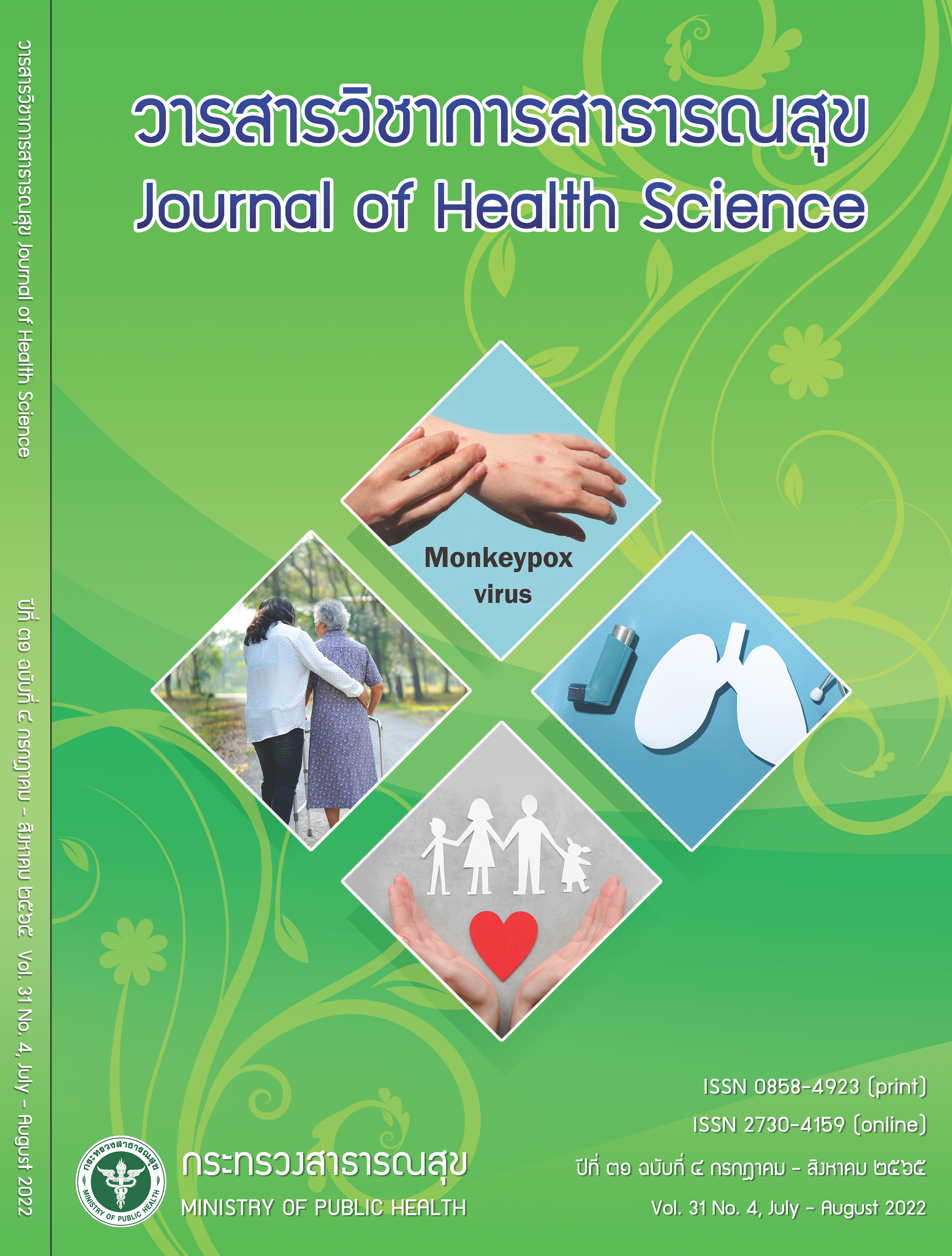Model Development for the Surveillance, Prevention and Control the COVID-19, and Protection of People’s Rights in a New Normal Way by a Virtual Community of Primary Health Care Service Network, Mahasarakham Province, Thailand
Keywords:
model development, surveillance system, prevention and control of COVID-19, people’s rights protection, virtual community, primary health service networkAbstract
The purpose of this research was to evaluate and analyze factors associated with the success in the development of a surveillance system, prevention and control of COVID-19, and protection of people’s rights in a new normal way by a virtual community, and to apply techniques for building a future together. It was conducted as a mixed method research within the primary health service network of Maha Sarakham Province. In the Phase 1, a workshop was organized to create a virtual community and expand the results in a target group of 750 people and analyze the content to create an operational hypothesis. The Phase 2 collected data on virtual community members, and altogether 254 sample groups were obtained. The research tool was an estimation scale questionnaire. Data were analyzed using descriptive statistics and multiple regression analysis. The Phase 3 was to assess, confirm and create a model for developing surveillance systems by a target group of 20 experts; follwed by the evaluation and validation of the results to obtain the draft surveillance model, and to apply the results of verification and recommendations to improve the system. The results showed that the overall success level of surveillance system development was high, with the meanof 3.62 and standard deviationof 0.65. The causal factors influencing the success of surveillance system development included public communication, participation in government measures, information technology, expectation of benefits, and the readiness to respond to the epidemic situation of the health service units; of which the 5 variables had a multiple regression of 0.787. They were able to predict the success of surveillance system development by 60.9% (R2 =.609, F=194.641) with statistical significance (p<0.05). Based on the research findings, the validation of the appropriate surveillance system development model consists of two main components: (1) surveillance system development success consisted of 5 main components and 35 sub-components; and (2) the conditional factors influencing the success of surveillance system development were 5 main components and 42 sub-components. In conclusion, the elements of the model are highly feasible, and the model can lead to the development of policy proposals, preparedness, capacity development and strengthening of the primary care network within the new normal lifestyles of Thailand.
Downloads
Downloads
Published
How to Cite
Issue
Section
License

This work is licensed under a Creative Commons Attribution-NonCommercial-NoDerivatives 4.0 International License.







